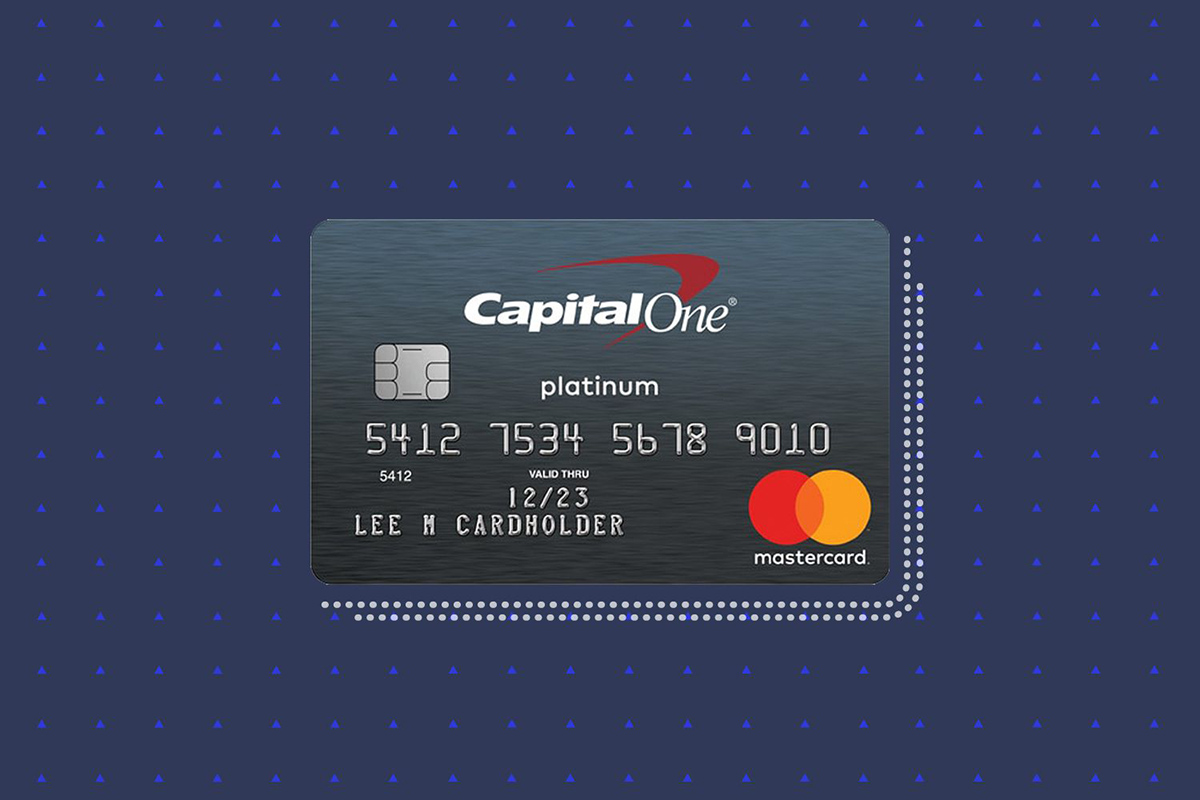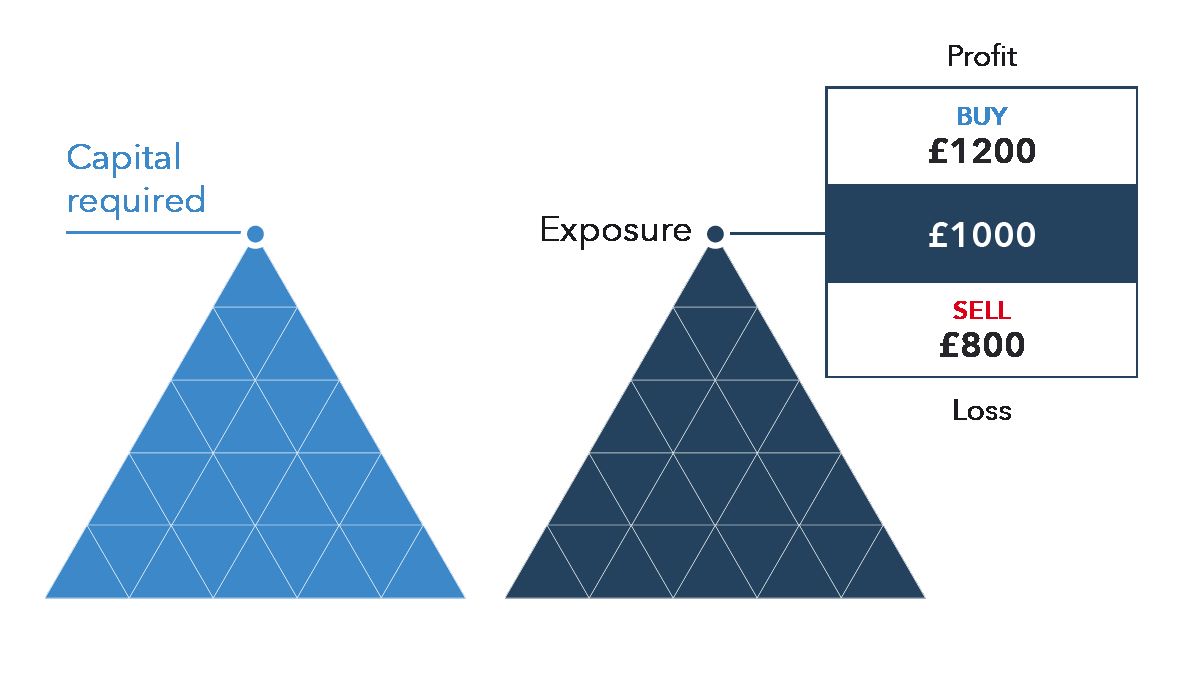Home>Finance>How To Request A Credit Increase With Capital One


Finance
How To Request A Credit Increase With Capital One
Modified: March 5, 2024
Learn how to request a credit increase with Capital One and take control of your finances. Unlock higher credit limits and improve your financial flexibility.
(Many of the links in this article redirect to a specific reviewed product. Your purchase of these products through affiliate links helps to generate commission for LiveWell, at no extra cost. Learn more)
Table of Contents
- Introduction
- Understanding the Credit Increase Process
- Assessing Your Eligibility
- Gathering Required Information
- Step-by-Step Guide to Requesting a Credit Increase with Capital One
- Alternative Options for Increasing Your Credit Limit
- Tips for a Successful Credit Increase Request
- Frequently Asked Questions (FAQs)
- Conclusion
Introduction
As a Capital One credit cardholder, you may encounter situations where you need a higher credit limit to accommodate your financial needs. Whether it’s to make a large purchase, cover unexpected expenses, or simply have more spending power, requesting a credit increase can provide a solution.
A credit increase allows you to access more available credit on your Capital One credit card, which can improve your credit utilization ratio and potentially boost your credit score. However, it’s important to understand the process and requirements to ensure a successful request.
In this article, we will guide you through the steps of requesting a credit increase with Capital One. We’ll also explore alternative options for increasing your credit limit, provide tips for a successful request, and address common questions and concerns.
Before diving into the specific steps, it’s important to note that the approval of a credit increase request is at the discretion of Capital One’s underwriting team. Meeting the eligibility criteria and providing accurate information will increase your chances of approval, but it is ultimately up to Capital One to determine the amount of credit increase you may receive.
Now, let’s explore the credit increase process with Capital One and how you can navigate it effectively.
Understanding the Credit Increase Process
Before diving into the credit increase request, it’s essential to have a clear understanding of how the process works. When you request a credit increase with Capital One, the bank will evaluate your financial standing, credit history, and repayment behavior to assess your eligibility.
Capital One follows a few key factors when considering a credit increase:
- Creditworthiness: Your creditworthiness is a major factor in determining your eligibility for a credit increase. Capital One will analyze your credit score, payment history, and overall credit profile to assess the risk associated with granting you additional credit.
- Income and employment stability: Your income and employment stability play a crucial role in determining your creditworthiness. Capital One will evaluate your income sources, employment history, and stability to ensure that you have the capacity to handle a higher credit limit.
- Payment history: Your payment history is a reflection of your ability to manage credit responsibly. Capital One will review your past payment behavior, including any missed or late payments, to assess your reliability in meeting your financial commitments.
- Debt-to-income ratio: Capital One may also consider your debt-to-income ratio, which compares your monthly debt payments to your monthly income. Lower debt-to-income ratios indicate a healthier financial position and a better chance of approval for a credit increase.
It’s important to note that Capital One will perform a credit inquiry when you request a credit increase. This inquiry may have a slight impact on your credit score, so it’s advisable to limit the number of credit increase requests you make within a short period of time.
Understanding these factors will help you assess your likelihood of being approved for a credit increase. By maintaining a positive credit history, a stable income, and a responsible payment pattern, you can position yourself for a successful credit increase request.
Now that you have a clearer understanding of the credit increase process, let’s move on to assessing your eligibility for a credit increase with Capital One.
Assessing Your Eligibility
Before proceeding with a credit increase request, it’s important to assess your eligibility to ensure that you have a higher chance of approval. While meeting all eligibility criteria does not guarantee approval, it does increase your chances of a successful credit increase with Capital One.
Here are some factors you should consider when assessing your eligibility:
- Payment History: Capital One will review your payment history to see if you have a consistent track record of making on-time payments. Timely payments indicate responsible credit management and increase your chances of being approved for a credit increase.
- Credit Score: Your credit score is a numeric representation of your creditworthiness. Capital One typically considers applicants with good to excellent credit scores for credit limit increases. It’s recommended to have a credit score above 670 to enhance your eligibility.
- Existing Credit Limit Utilization: Capital One will assess how much of your existing credit limit you are currently utilizing. Ideally, you should aim to have a utilization ratio below 30%. A lower utilization ratio demonstrates responsible credit usage and shows that you can handle a higher credit limit.
- Account Age: Generally, Capital One prefers applicants with a longer credit history. If you have a relatively new account, it might be beneficial to wait until your account has aged before requesting a credit increase.
- Income: Your income level plays a significant role in your eligibility for a credit increase. A higher income shows that you have the capacity to handle a higher credit limit. It’s important to provide accurate information about your income when submitting a credit increase request.
- Overall Financial Standing: Capital One will consider your overall financial standing, including any outstanding debts, loans, or bankruptcies. A solid financial standing increases your chances of being approved for a credit increase.
By evaluating these factors and ensuring that you meet the eligibility criteria, you can determine whether it’s the right time to proceed with a credit increase request. If you feel confident about your eligibility, it’s time to gather the necessary information to submit your request.
In the next section, we will guide you through the steps of gathering the required information to maximize your chances of a successful credit increase request with Capital One.
Gathering Required Information
Before you submit a credit increase request with Capital One, it’s crucial to gather all the necessary information and documents to ensure a smooth and efficient process. Having the required information readily available will help expedite your request and provide the bank with the necessary details to assess your eligibility.
Here is a list of the information and documents you will typically need when requesting a credit increase with Capital One:
- Personal Information: This includes your full legal name, date of birth, Social Security number, and contact information (address, phone number, and email address).
- Capital One Account Details: You will need your Capital One credit card account number and the type of card you hold (e.g., Venture, Quicksilver, Platinum).
- Income Information: Prepare information about your annual income, including employment details and additional sources of income (if applicable).
- Financial Information: Gather details about your financial standing, including any outstanding debts, loans, or mortgages you may have.
- Requested Credit Increase Amount: Determine the specific amount of credit increase you are looking to request. It’s advisable to choose a reasonable increase that aligns with your financial needs and capacity to manage debt responsibly.
- Additional Documentation: Depending on your situation, Capital One may request additional documentation to support your credit increase request. This could include recent pay stubs, bank statements, or proof of other sources of income.
Be sure to gather accurate and up-to-date information to avoid any delays or complications in the credit increase process. Double-check all the collected information and documents for accuracy and completeness.
Once you have gathered all the necessary information, you are ready to proceed with the step-by-step guide to requesting a credit increase with Capital One. In the next section, we will outline the process and provide guidance on how to navigate it successfully.
Step-by-Step Guide to Requesting a Credit Increase with Capital One
If you’re ready to request a credit increase with Capital One, follow these step-by-step instructions to navigate the process smoothly:
- Log into Your Capital One Account: Visit the official Capital One website and log into your account using your username and password. If you don’t have an online account set up yet, you’ll need to create one.
- Navigate to the Credit Increase Request Section: Once logged in, look for the “Account Services” or “Manage My Account” section. Within this section, you should find an option to request a credit limit increase.
- Provide the Required Information: Follow the prompts and provide the necessary information we discussed earlier, such as personal details, Capital One account information, income information, and requested credit increase amount.
- Review and Submit: Take a moment to review the information you’ve entered to ensure accuracy. Once you are satisfied, submit your credit increase request.
- Wait for the Decision: After submitting your request, you will need to wait for Capital One’s decision. The decision time may vary, but you can expect to receive a response within a few weeks.
- Check for Approval: Once a decision has been made, Capital One will notify you of their decision. If your request is approved, you will receive your new credit limit information along with any additional details.
- Confirm the New Credit Limit and Use Responsibly: If your credit increase is granted, make sure to confirm the new credit limit and update your records accordingly. Remember to use the increased credit limit responsibly and avoid accumulating debt that you cannot manage.
It’s important to note that not all credit increase requests may be approved. If your request is denied, it’s essential to understand the reasons behind the decision. Capital One will provide the reasons for denial, which may include a low credit score, recent credit inquiries, or a high credit utilization ratio. Take the opportunity to evaluate your financial situation, address any issues, and work towards improving your credit standing before reapplying in the future.
Now that you know the step-by-step process of requesting a credit increase with Capital One, let’s explore alternative options for increasing your credit limit in case your request is not approved or you’re looking for additional avenues to boost your available credit.
Alternative Options for Increasing Your Credit Limit
If your credit increase request with Capital One is not approved or you’re looking for additional ways to increase your available credit, there are alternative options you can consider. These options can help you access more credit and improve your financial flexibility:
- Make Multiple Payments: Instead of waiting for your credit limit to increase, consider making multiple smaller payments throughout the month. This will reduce your outstanding balance and free up more available credit.
- Pay Your Balance in Full: Paying off your credit card balance in full each month not only helps you avoid interest charges but also demonstrates responsible credit management. Consistently paying off your balance can improve your credit history and increase the likelihood of a credit limit increase in the future.
- Apply for a New Credit Card: If you’re looking for a significant increase in available credit, you can consider applying for a new credit card. Adding a new credit card to your wallet can diversify your credit mix and potentially increase your overall credit limit.
- Request a Credit Limit Increase with Other Creditors: If you have credit cards with multiple issuers, you can explore the option of requesting a credit limit increase with those creditors as well. Each creditor may have different eligibility criteria, so it’s worth exploring all available options.
- Consolidate Your Debt: If you have multiple credit cards with varying credit limits, consider consolidating your debt onto one card with a higher credit limit. This can simplify your payments and potentially increase your overall available credit.
- Improve Your Credit Score: Working on improving your credit score can open doors to higher credit limits. Focus on paying your bills on time, keeping your credit utilization low, and addressing any negative marks on your credit report.
- Negotiate with Your Creditor: In some cases, you may be able to negotiate a credit limit increase with your current creditor. Reach out to the customer service department of your credit card issuer and inquire about the possibility of a credit increase.
It’s important to note that each alternative option has its own considerations and potential impacts on your credit score and overall financial situation. Evaluate each option carefully and choose the one that aligns best with your financial goals and circumstances.
Now that you are aware of the alternative options for increasing your credit limit, let’s move on to the next section where we’ll provide some tips for a successful credit increase request with Capital One.
Tips for a Successful Credit Increase Request
When requesting a credit increase with Capital One or any other credit card issuer, following these tips can increase your chances of a successful request:
- Maintain a Good Credit History: Consistently make your payments on time, avoid carrying high balances, and demonstrate responsible credit management. This will improve your credit history and position you as a reliable borrower in the eyes of Capital One.
- Monitor Your Credit Utilization Ratio: Aim to keep your credit utilization ratio below 30%. By using a lower percentage of your available credit, you demonstrate good credit management and a lower risk level to Capital One.
- Keep a Steady Income and Employment: Having a stable income and employment history can boost your eligibility for a credit limit increase. Capital One wants to ensure that you have the means to handle a higher credit limit.
- Pay Attention to Timing: Choose an appropriate time to request a credit increase. It’s advisable to wait until you have a good payment history, a solid credit score, and sufficient time with your Capital One credit card.
- Review and Update Your Personal Information: Ensure that your personal information, such as your address and contact details, are up to date in your Capital One account. Accurate information allows Capital One to reach you and process your request more efficiently.
- Request a Reasonable Credit Increase: When specifying the desired credit increase amount, choose a reasonable figure that aligns with your financial needs. Requesting an excessively high credit increase might result in denial.
- Prepare Supporting Documentation: If Capital One requests additional documents to support your credit increase request, be prepared to provide them promptly. This can expedite the decision-making process.
- Be Patient: After submitting your credit increase request, be patient and allow Capital One sufficient time to review and process your request. Avoid submitting multiple requests within a short period, as it may have a negative impact on your credit score.
- Follow Up if Necessary: If you haven’t received a response within a reasonable time frame, consider reaching out to Capital One’s customer service to inquire about the status of your request. They can provide updates and address any concerns or questions you may have.
By following these tips, you can enhance your chances of a successful credit increase request with Capital One. Remember, even if your request is initially denied, you can work on improving your credit standing and try again in the future.
In the next section, we’ll address some frequently asked questions (FAQs) related to credit limit increases with Capital One.
Frequently Asked Questions (FAQs)
Here are some commonly asked questions regarding credit limit increases with Capital One:
- 1. How long should I wait before requesting a credit increase with Capital One?
- 2. Will requesting a credit increase with Capital One affect my credit score?
- 3. How much of a credit increase can I expect from Capital One?
- 4. Can I request a credit increase with Capital One if I have other credit card debt?
- 5. What should I do if my credit increase request is denied?
- 6. How often can I request a credit increase with Capital One?
- 7. Can I request a credit limit increase for multiple Capital One credit cards?
- 8. Will a credit limit increase with Capital One affect my ability to apply for other credit cards?
It’s generally recommended to wait at least six months to a year before requesting a credit increase. This allows you to demonstrate responsible credit usage and build a positive payment history.
Requesting a credit increase with Capital One may result in a hard inquiry on your credit report, which can have a slight impact on your credit score. However, the impact is usually minimal and temporary.
The amount of credit increase you can expect from Capital One varies. It depends on several factors, including your creditworthiness, income, payment history, and utilization ratio. There is no fixed percentage for credit limit increases.
Yes, you can still request a credit increase with Capital One even if you have other credit card debt. However, having a significant amount of outstanding debt may affect the approval decision.
If your credit increase request is denied, take the opportunity to review the reasons provided by Capital One. Address any potential issues, such as improving your credit score or reducing your outstanding debt, before reapplying in the future.
There is no specific limit to how often you can request a credit increase with Capital One. However, it’s advisable to wait at least three to six months between requests to avoid multiple hard inquiries on your credit report.
Yes, you can request a credit limit increase for multiple Capital One credit cards separately. The process and eligibility criteria will be similar for each card.
A credit limit increase with Capital One may positively affect your creditworthiness and increase your chances of being approved for other credit cards. It can improve your overall credit utilization ratio and showcase your ability to handle higher credit limits.
It’s worth noting that specific policies and guidelines may vary, so it’s best to refer to Capital One’s official website or contact their customer service for the most accurate and up-to-date information regarding credit limit increases.
Now that we’ve addressed some frequently asked questions, let’s wrap up this guide.
Conclusion
Requesting a credit increase with Capital One can provide you with the financial flexibility and increased spending power you need. By understanding the credit increase process, assessing your eligibility, and following the step-by-step guide we provided, you can navigate the request process effectively.
Remember to maintain a good credit history, keep your credit utilization ratio low, and demonstrate responsible credit management. These factors play a vital role in increasing your chances of a successful credit increase request. Additionally, exploring alternative options, such as making multiple payments or applying for a new credit card, can help you access more available credit.
It’s important to be patient throughout the process and recognize that not all credit increase requests may be approved. If your request is denied, take the opportunity to evaluate your financial situation, address any issues, and work towards improving your credit standing before reapplying in the future.
We hope this comprehensive guide has provided you with valuable insights and tips for requesting a credit increase with Capital One. Remember to review the specific requirements and guidelines outlined by Capital One and adapt them to your individual circumstances.
As always, if you have any further questions or concerns, it’s best to reach out to Capital One’s customer service for personalized assistance. They can provide you with more specific information and guidance related to your account.
Best of luck with your credit increase request, and may you achieve your financial goals with confidence!














